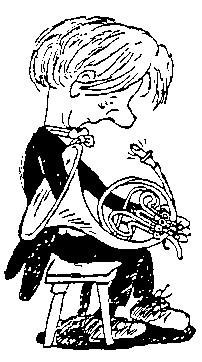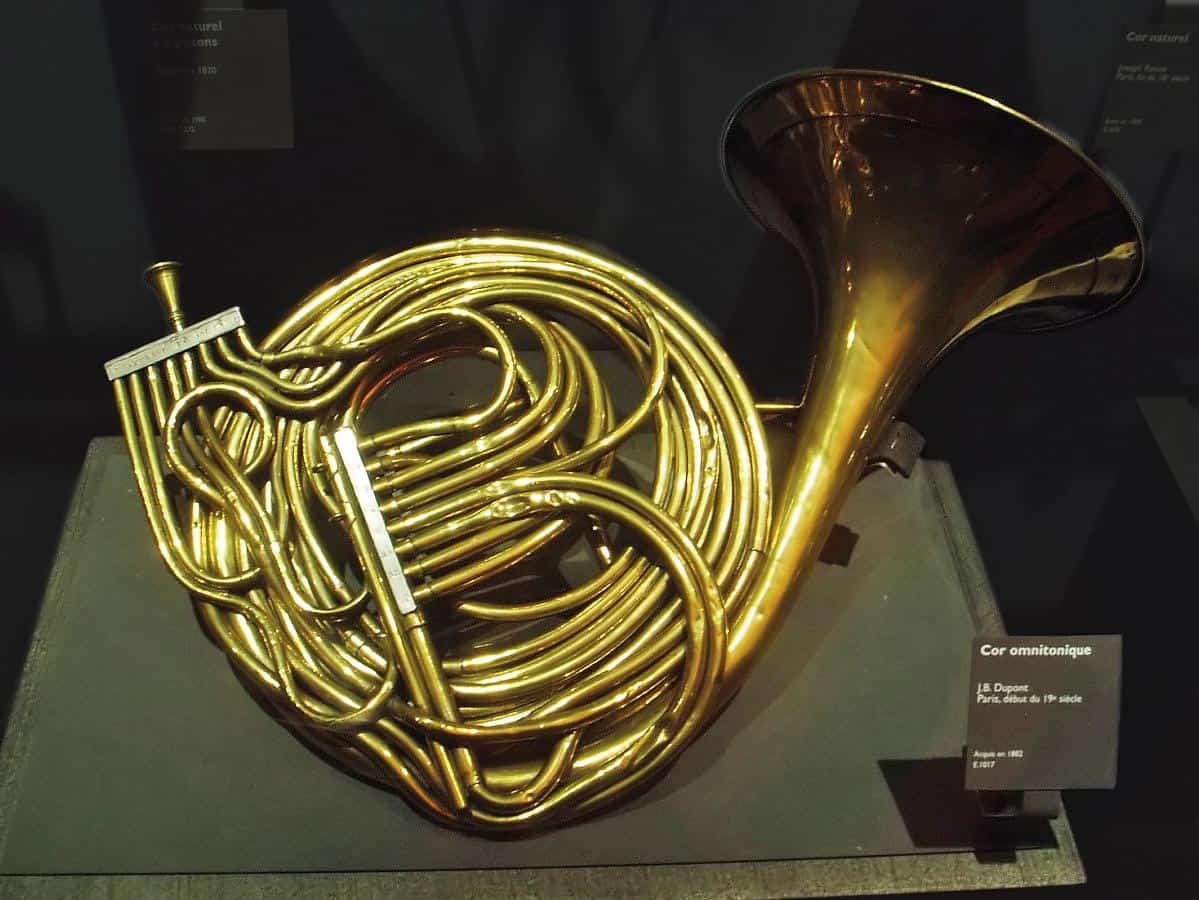16.00 Uhr
Neujahrskonzert

Robert Schumann called it the “soul of the orchestra” – for the French horn has a wonderfully warm, multi-layered sound. Sometimes it announces heroes, sometimes it sings with a melancholy wistfulness. Not only is it capable of expressing various emotional states, it is also a highly sensitive instrument in itself that demands strong nerves, sophisticated technique and persistent training to master. Let’s unravel the complex French horn with a tube length of 275 to 472 cm, depending on its tonal range.
“Hand stopping” is a technique from an age when natural horns didn’t have valves: the right hand (or a stop mute) inserted into the bell alters the quality of the sound. It is a bit tricky, requires a good deal of practice and becomes a way of correcting the pitch of notes that cannot be controlled easily. On the modern French horn, “stopping” is only used for special effects – it makes for a crisper sound.

Long story short, playing the French horn is difficult. The long, narrow tube means that the natural notes, which are easy to control and very clean, are also close together and comparatively difficult to hit. Some notes can be played better on an F horn, others on the somewhat shorter Bb horn. In order to cover both sound ranges well, in the late 19th century Eduard Kruspe and Bartholomäus Geisig from Erfurt produced a prototype for the “double horn” with a switch valve. A triple horn was even developed. As with many other instruments, the sound and techniques associated with the horn have been debated at length throughout history – double horn or pure F horn, with or without valves, use of a stop mute or not... The list is long and there are also local playing and tonal traditions, especially when it comes to the Viennese horn.

However, the omnitonic horn never became established – on it, each natural harmonic series can be played on its own pipe.
As mentioned above, playing the French horn requires nerves of steel, as everyone in the audience and the orchestra hears, knows and loves the instrument’s wonderful solo passages. Just a µ too little lip tension, a bit too much momentum in the air stream, condensation, the right hand a few millimetres too deep in the bell – and the dreaded “squeak” is hard to avoid. This can even happen (though extremely rarely) to the best players. Fortunately, on the “spiral of luck”, as the horn is sometimes laconically called, performers are able to attain the big prize frequently enough – that absolutely flawless, deeply soulful melody that only the French horn can produce!
From the mid-18th century onwards, the French horn became the only brass instrument to secure a permanent spot in the woodwind quintet, as its sound perfectly complements the wind ensemble of flute, oboe, clarinet and bassoon.
French horn players are athletes, in a way, meaning that all the facial muscles need to be trained properly! In technical lingo, intervals of stress and rest lead to supercompensation (improvement of performance), overstraining to a performance drop; understraining to stagnation. When discretion is required, “dry runs” can be practiced on the mouthpiece in a hotel room, at the airport or in a taxi. The main thing is maintaining a healthy embouchure!
Cover: Tobias Kruse/OSTKREUZ